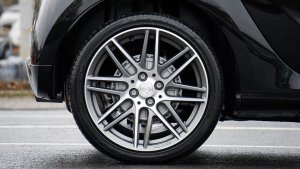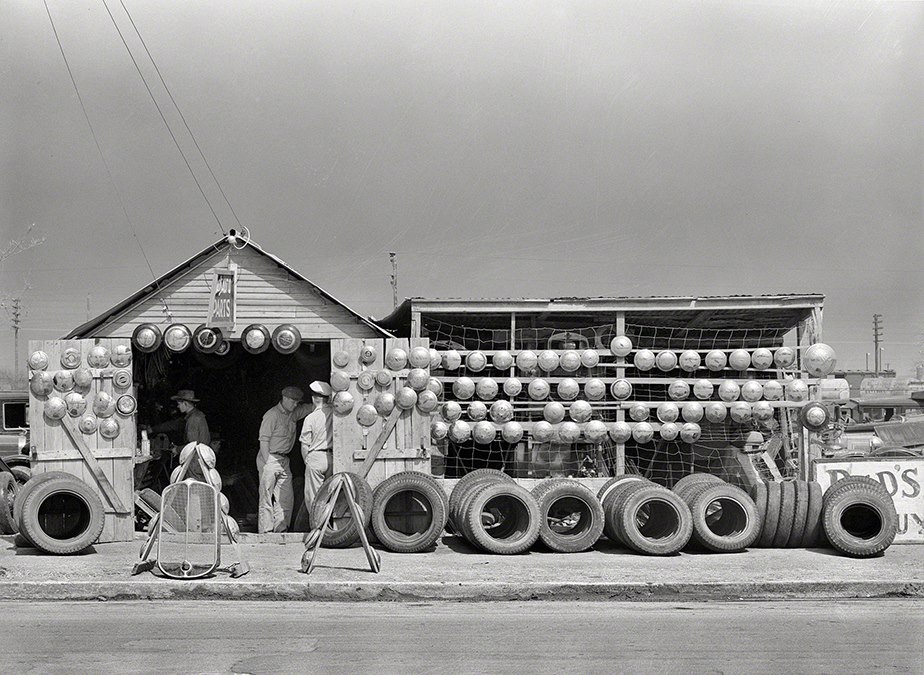Posted on 1/12/2018

How much do you remember about tire maintenance from your driver’s education class? I bet you don’t remember much. Most courses cover the rules of the road, not how to maintain a vehicle. As a new driver, there are many things to learn. Taking care of your car is one of those things. Let’s start with the one part of your vehicle that touches the road, your tires. That’s right, your tires are the only part of your vehicle that actually touch the road. That makes them an important safety feature, a factor in fuel economy, and a crucial part of your vehicle’s maintenance. I want to make sure that you can take care of your tires and make them last! Know how to check your tire pressure! Low tire pressure is the leading cause of tread damage, blowouts, and premature wear. To check your tire pressure all you need is a tire pressure gauge. Check your pressure by removing the cap from your valve stem and inserting the gauge. Most tires have a recommen ... read more
Posted on 1/12/2017

So your vehicle’s been sitting for a while…you get in it, start the engine and pull out of the driveway when you notice a hard, rough (but very regular) vibration that only gets worse with speed. It doesn’t feel like it’s coming from the driveline or suspension – so what is it?It could be that the tires have developed flat spots.With the weight of the vehicle pressing down on the tires for long periods, a section of the rubber and belts can become softer (or harder) than the rest of the tire. This can be exacerbated by cold weather, or just by parking on a cold concrete floor.Low-profile tires with short sidewalls can be more prone to flat-spotting, as can tires with an H or higher speed rating. In most cases, you can just grit your teeth and drive and the flat spots will work their way out of the tires…but not always. In some severe cases, the flat-spotting is permanent.So, what can you do?There are all sorts of old-wives’-tales about parking ... read more
Posted on 9/29/2016

Believe it or not, many new vehicles come without a spare tire. Manufacturers have a few different reasons for that, including weight savings, space efficiency, and cost. When you're stuck by the side of the road, though, none of that really matters much, does it? Instead, these vehicles come equipped with an inflation kit and/or a can of sealant. Sealant is a gooey substance in an aerosol can that's designed to coat the inside of the tire due to centrifugal force once you get rolling again, hopefully sealing the puncture. These products, such as Fix-A-Flat, have been on the market for decades and tend to work pretty well on a minor puncture. They're not a permanent fix, however. Your speed should be limited after using Fix-A-Flat type products, and you should see about getting the tire repaired or replaced as soon as possible. In addition, most of these products freeze at temperatures below 32 degrees and may not be usable in cold weather. The other alternative on new v ... read more
Posted on 8/25/2016

There are so many tire designs on the road -- all-season, high performance, touring, light truck -- and even within a specific tire design, there may be several choices of tread patterns. What differentiates them, and what are the pros and cons of each tread design? -- Directional tread has a pattern of grooves and chevron shapes, all pointed in one direction. This design makes it easy to direct water away from the tire's contact patch and prevent hydroplaning in wet weather, and also offers low noise and great road manners. The directional design means tires can only be rotated front-to-rear and not side-to-side or diagonally. -- Symmetrical tread patterns feature grooves or herringbone designs that are extremely uniform across the tire's tread face. Symmetrical designs are popular for touring tires due to their quiet ride, long wear and ease of rotation, making them a very versatile tread pattern. -- Asymmetrical tread patterns are a bit of a c ... read more
Posted on 7/28/2016

The tire is such a commonplace item -- it's on every car, every truck, every bicycle, every aircraft. It's easy to not give the tire a second thought, but like every other technology, the tire has an interesting history of advances and failures. In the 19th century, carriages and wagons used steel strips for "tires" on their wheels, with the punishing sort of ride that you'd expect. In later years, they were shod with strips of natural rubber, which was an improvement but was still problematic. Solid rubber still rode pretty rough, and the natural, uncured rubber would get gummy in hot weather and shrink and harden in cold temperatures. Charles Goodyear was able to help with the invention of vulcanized rubber, but the modern tire was still several years off. By the 1880s, the bicycle was becoming much more popular, and in 1888 Scottish engineer John Dunlop was watching his son struggle with the bone-shaking ride of his tricycle. He then devised the first-ever air-filled ... read more